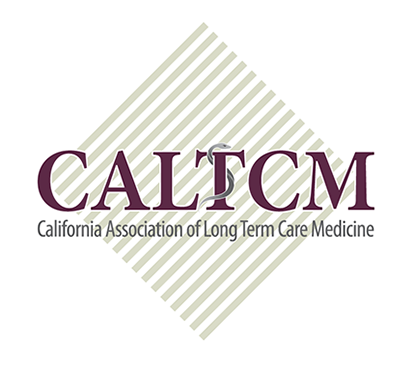The regulatory framework for advancing excellence in cardiopulmonary resuscitation practices in nursing homes (NHs) is still evolving. The Patient Self-Determination Act (PSDA) was passed as an amendment to the Social Security Act in 1990. In advancing resident rights in nursing homes (NH), the Centers for Medicare and Medicaid Services (CMS) issued two related F-tags in 2012 and 2015 (e.g., F-tags 155 and 678, respectively). While F-tag 155 did not explicitly ban NH facility-wide no CPR policies, F-tag 678 §483.24(a)(3) directly addressed CPR practices in NHs. It required that “personnel provide basic life support, including CPR, to a resident requiring such emergency care prior to the arrival of emergency medical personnel and subject to related physician orders and the resident’s advance directives.” While current American Heart Association guidelines require that staff “get and use the AED as soon as it is available,” the reality is that California does not require that NHs have AEDs. The CCR Title 22 §80075.1 on AEDS only states that “in an adult community care facility, a licensee is permitted to maintain and operate an AED at the facility if all of five requirements are met. States vary widely in AED requirements for settings, either by health codes or legislation.1
Researchers have reported on the state of CPR practices in American NHs. Issues raised included the lack of early defibrillation capacity and automated external defibrillators (Fisher, Anzalone, McGhee, et al. 2007); the need to re-evaluate CPR procedures in NHs, given staffing challenges and inadequate formal advance informed consent processes (Elon, 2023); and large variations in and inadequate CPR and AED applications in NHs (Jiang, Raj, Sherrod, et al. 2025).
Review of statement of deficiency (SOD) narratives for Immediate Jeopardy (IJ) citations associated with non-compliance with F-tag 678 provide granular-level point-of-care data on substandard CPR and AED practices in NHs. In 2024, a colleague and I presented at the Gerontological Society of America’s annual meeting on findings of a study that analyzed SODs for 80 NHs receiving IJ citations for non-compliance with F-tag 678. NHs included in the sample came from CMS Region V (Illinois, Indiana, Michigan, Minnesota, Ohio, Wisconsin). We selected this region because it contained the greatest number of IJ citations related to F-tag 678. The sample was taken from a national publicly reported database of citations issued from 2019-2022. Study details are available.2
We hope that readers will benefit from our reporting of some practical and actionable findings. Practice patterns of non-compliance were organized using Donabedian’s quality framework of structure, process, and outcome. This approach hopes to demonstrate the complexity involved in properly implementing CPR as a clinical intervention, in addition to the previously reported study findings about access to AEDs in NHs. Structural failures included a lack of CPR-certified staff; emotionally distraught staff; no registered nurse on duty; and staff unfamiliarity with facility CPR practices. Process failures were related to documentation; including incomplete advance directives; state-specific versions of POLST forms; lack of clarity about CPR preferences; inadequate staff communication and coordination; absent CPR policies; and equipment failures. Outcome failures included a performance of the wrong intervention and significant temporal delays in initiating any intervention.
There are practical and actionable steps that can be taken to improve your facility’s capacity to comply with F-tag 678.
- A promising intervention that seeks to address some of these challenges is the POLST certificate Program that seeks to develop “Champions” who may work with residents to discuss, document, and communicate treatment preferences. This intervention has the potential to address several implementation- and documentation-related practice failures identified in the IJ SOD citations included in our study.
- CPR is an intervention that is time-dependent. It is essential that staff can immediately identify the appropriate action to take if a resident is found not breathing and/or without a pulse. The identifier needs to be on the person of the resident. It is not helpful to rely on information in a chart or a list that is at the nurse’s station. Signs in the room or dots on a door do not help if the resident is not in their room. Time is of the essence.
- Performing CPR in NHs is thankfully a rare event. It is understandable that a staff member may become frightened in a practice setting where much of the care is of a chronic nature. Consider having this American Heart Association poster in every resident’s room because it provides a clear reminder to stressed staff about the essential actions that need to be taken while awaiting the arrival of Emergency Medical Services.
- Invest in having CPR-certified staff. Although this is a regulatory requirement, we found that most facilities receiving IJ citations only had a handful of staff certified.
- Conduct regular training exercises for staff to ensure they respond with composure during cardiac emergencies.
- Be sure that staff know when AHA guidelines allow for non-performance of CPR, such as (1) obvious signs of irreversible death are present (e.g. rigor mortis, dependent lividity, decapitation, transection, or decomposition) and (2) initiation of CPR could cause injury or peril to the rescuer.
- Routinely audit (1) documentation related to advance care planning including advance directives in chart; completed POLSTs; MD orders; notation in care plans; at least quarterly review with residents that their advance care planning preferences are current, and (2) functioning equipment on the emergency cart that may include an AED.
References
- aedbrands.com/resources-type/state-aed-laws
- Innovations in Aging, 2024, 8 (S1), ID igae098.4309
- American Heart Association Poster: https://heartcprtrainingcenter.com/pdf/2020BLSSummary.pdf

